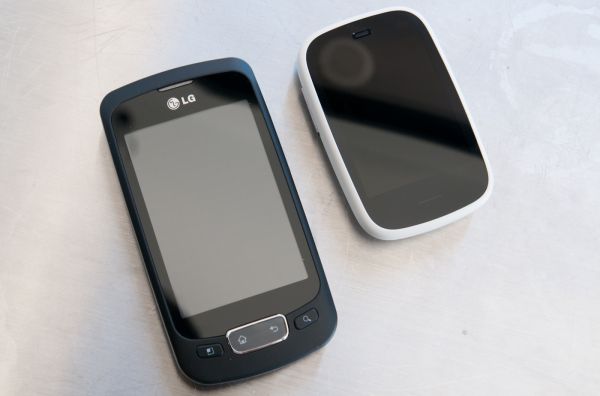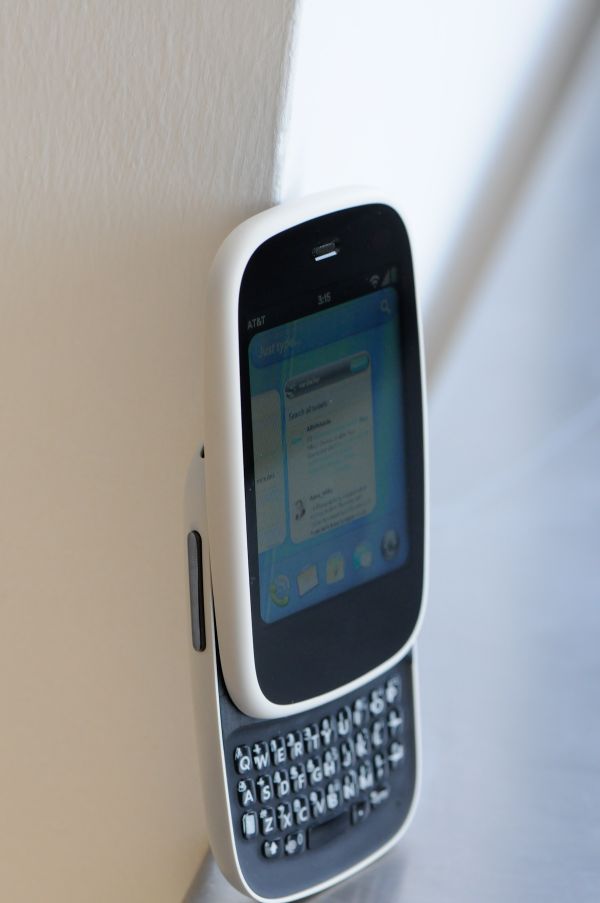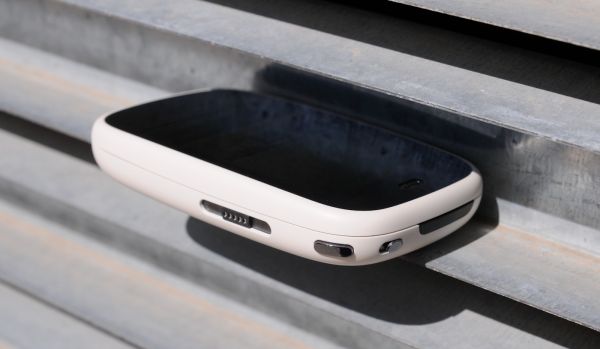HP Veer 4G Review - Getting Us Excited for Pre 3
by Brian Klug on June 7, 2011 5:01 PM EST- Posted in
- Smartphones
- HP
- AT&T
- Palm
- veer
- webOS
- HSPA+
- Mobile
- HP Veer 4G
I mentioned at the beginning that product launches generally seem to be top down, rather than bottom up. Launch the flagship first, get the enthusiasts excited, then release mainstream and lite versions to cater to flesh out options for everyone else. The original Palm Pre launches went this way for a reason - imagine how different the Palm Pre would have turned out had the Pixi preceded it. That said, I completely understand HPalm's reasoning for launching the Veer when it did, and the reason is simple.
WebOS needs new hardware. The Palm Pre 2 wasn't a widespread mass market device that appealed to many more than WebOS enthusiasts, and in the US at least it's been proven time and time over that phones absolutely need carrier backing and subsidy to sell. The Veer undoubtedly is an easier device to manufacture, it's using a very popular SoC, and most of the package is altogether very safe. There's no time for HPalm to wait for the Pre 3 to get to a similar level of readiness, and so we get a launch like this that's bottom up. Short term it might make the situation confusing, but long term we're talking about whether WebOS will have a place at the table this time next year.
I've come away with a bunch of different thoughts having used the Veer for this long, but the biggest of them is that although the device is definitely not for me, it has actually had the side-effect of getting me excited about the Palm Pre 3. There's nothing wrong with the Veer itself, I'd just prefer a larger display, bigger keyboard, and more importantly the flagship device where most of the developer attention will be focused. That's an important point too - the experience will always be best on whatever device the most developers have in their pocket, purely by virtue of them spending the most time with it.
The next thought is that WebOS feels incredibly smooth and fluid on the 800 MHz MSM7230 - it's a mind blowing difference in speed compared to the Pixi, and likewise with the Palm Pre Plus. In subjective terms the Veer feels dramatically smoother than any of the Android phones I've played with which also use the MSM7230. On Android the only real competitor in terms of this size is the LG Optimus One series of devices (which go under a variety of names stateside for each carrier), and although I'm a big fan of those devices, the compromise that's made is you get a decidedly slower phone based on a 600 MHz ARMv6 MSM7227. Then there's the matter of price. As of this writing, can get the Veer for $99 from AT&T directly, or $50 from Amazon Wireless on contract.

Left: LG Optimus One, Right: HP Veer 4G
I was originally skeptical that WebOS could remain competitive with an entirely single core lineup in a world where dual and even quad core is becoming the norm, but honestly I've come away with renewed confidence.
If you're in the market for a tiny smartphone and are willing to use a nonstandard cable for USB and a small detachable dongle for your headphone jack, the Veer makes a lot of sense. The other big ones are the non user-replaceable battery and lack of external storage, but admittedly that's the same boat the Pixi was in. The Veer runs the full version of WebOS 2.0 on a modern SoC, and is a huge step forward in polish and performance from the Pixi. There's nothing lite about the experience, and WebOS 2.0 definitely feels like a step forwards from WebOS 1.0. Now, about that Pre 3...












25 Comments
View All Comments
ClockerXP - Saturday, June 11, 2011 - link
Dial ##3-836# to get to the menu where you can disable 3G. Works on my Pre+ on Verizon!ClockerXP - Saturday, June 11, 2011 - link
I mean ##3836# (no dash)dananski - Sunday, June 12, 2011 - link
I agree that the hardware is better than people say. I haven't had any problems with mine and it only has minor scratches from all the times I've dropped it. But the OS is good too. Cards and synergy are two things I couldn't go without, and I like the simple gestures.ioannis - Tuesday, June 7, 2011 - link
Brian, thanks for the comprehensive review, delivered in the usual Anandtech quality.The App Catalogue compatibility seems to be the only major complain I'd have over this phone. My question is, will WebOS 3.0 with the Enyo framework come to the Veer? And assuming that all the apps eventually get ported to it (or at least all apps released from the time 3.0 is out will be based on it), would that solve the 'pixel density'/resolution-dependent apps problem?
softdrinkviking - Tuesday, June 7, 2011 - link
Hi Brian. Great review. I especially liked your explanation of HSPA+, nice work there.I had one question. You again referred to Super LCD as (IPS) in this article, as you did in the article a few days ago (HTC evo 3D). In that article you crossed out the (IPS) and I assumed that meant you were reassessing that. Have you come to any conclusions about Super LCD and what process it is made with?
Brian Klug - Tuesday, June 7, 2011 - link
So I was mistaken earlier about Super LCD being IPS, I went over my notes and have written down that Super LCD is just PVA. I'm going to try and do some more digging to find out why I have that here and what the implications are. Honestly though the SLCD display on the Sensation looks quite good.-Brian
Solidstate89 - Tuesday, June 7, 2011 - link
I haven't owned a WebOS phone because of the flakiness of the hardware, but the OS has always appealed to me. Similarly although the Veer isn't for me, I do like just how much better WebOS 2.0 is looking.I sincerely wish them the best in the market as it is quite simply a brilliantly designed OS. However it's just taken too long to get to market. I wanted to get a Pre 3 on Verizon, but realized it would be too late with Verizon Wireless nixing its Unlimited Data plans before it could be released so I went to sprint and picked up a WP7 device.
Quite happy with it, and although it's a blatant rip-off, I can't wait for the card-style multitasking to arrive with the Mango Update :)
Best of luck to WebOS.
softdrinkviking - Tuesday, June 7, 2011 - link
cool, thanks for the reply & info. i have seen plenty of PVA screens in the store and they look pretty good to me, maybe not as good as the high-end NECs and other professional monitors, but i had a hard time telling the difference between the led backlit LG IPS and the similar sized BenQ with a PVA. (this is in Japan, so i can't say what models you have in the states).As long as they are good quality, and a decent resolution, I can't imagine that PVA would be unacceptable on a cel phone. they are undoubtedly better than TN.
jamawass - Wednesday, June 8, 2011 - link
I think the veer makes sense if you take into consideration hp's tablet strategy. A veer with mobile hotspot would be an excellent combo with a 7 in touchpad ( to be released after the 10 in later this yr). I have a 7 in sony reader which fits in all my jacket's pockets. That's my device of choice when I'm waiting at the auto shop, etc and I always receives glances when I whip it out of my jacket. It's light, and much more portable than an ipad.I suspect this is one of hp's strategies with the veer and I wouldn't be surprised if they market them as a combo deal in the future.
I've used webos for a year now and generally like it's efficiency, but Apple and other companies have been cannibalising their innovations. As stated above, hp needs to accelerate the upgrade cycle in both soft and hardware to survive.
marc1000 - Wednesday, June 8, 2011 - link
Brian and Anand, I could not find a way to contact you. So I will write this down on the comment section.Microsoft is killing the only thing cool on all older WindowsMobile phones (6.5 & below): the MyPhone service will die in a couple months.
please read this thread at XDA where some users reported receiving the same MS email with the news.
http://forum.xda-developers.com/showthread.php?t=1...